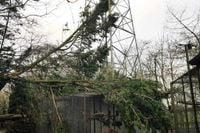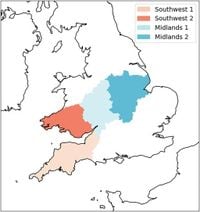Windstorms have emerged as the primary cause of significant power outages in the United Kingdom, predominantly through a phenomenon known as windthrow, where trees are uprooted or broken by strong winds, subsequently falling onto overhead power lines. A comprehensive study analyzing power outage data from 2006 to 2018 highlights a critical oversight in traditional risk assessments, which have primarily focused on wind speed alone. This study, led by researchers from the UK, reveals that neglecting additional factors such as antecedent rainfall, wind direction, and seasonal elements like leaf cover can lead to a staggering 2 to 5-fold underestimation of the likelihood of large power outages during windstorms.
According to Colin Manning, reporting on March 26, 2025, the study emphasizes the need for a more nuanced approach to predicting power outages, particularly as climate change continues to influence weather patterns. The researchers found that incorporating these variables into a statistical model, alongside wind speed, significantly enhances the predictive accuracy of potential outages. The findings are particularly relevant in light of recent events, such as Storm Eowyn, which left thousands of homes without power across Cumbria in January 2025, affecting over 1.1 million properties nationwide.
Professor Lizzie Kendon, Strategic Head of Climate Processes and Projections at the Met Office, commented on the study's implications, stating, "This is the first UK study demonstrating the importance of additional factors affecting wind-driven power outages. Understanding how these factors will change, and including them in future risk assessments, is critical for accurately projecting the changing likelihood of power outages in future." Kendon further noted that changes in the seasonality of storms and increases in heavy rainfall due to global warming may compound the impact of strong windstorms in the future.
The research underscores the importance of developing better preparedness and response strategies for power outages. As the UK transitions to a net-zero economy, the demand for electricity is expected to rise significantly, driven by the increasing use of electric vehicles, domestic heating, and air conditioning. This rising demand necessitates infrastructure upgrades to enhance power supply capacity, all while climate models project increases in the intensity and frequency of extreme weather events like windstorms.
Historically, power outage predictions have relied heavily on wind speed metrics, which have proven insufficient in capturing the variance in fault numbers during windstorms. The study advocates for a shift towards a multi-variable approach, integrating soil moisture conditions, wind direction, and seasonal variations to create a more robust impact forecast. This is particularly crucial as the UK experiences longer growing seasons and wetter winters, which are expected to influence wind-driven risks of power outages.
In analyzing power outage data from four UK regions managed by a single Distribution Network Operator (DNO), the researchers utilized the National Fault Interruption Reporting Scheme (NaFIRS) dataset to quantify the influence of various meteorological factors on wind-driven power outages. Their findings indicate that when a windstorm occurs following a period of high antecedent rainfall, the probability of significant power outages increases dramatically. For instance, in the Southwest region, the probability of outages exceeding the 95th percentile rose significantly when high wind speeds were combined with elevated soil moisture levels.
Moreover, the study found that the direction of the wind plays a critical role in the likelihood of power outages. In the Midlands, for example, deviations from the prevailing wind direction were associated with higher fault numbers, suggesting that unusual wind patterns can exacerbate the impact of storms. This insight is crucial for developing more accurate predictive models that account for both wind speed and direction, thus improving the reliability of power outage forecasts.
The seasonal effects on power outages were also highlighted in the research. The study noted a bimodal pattern in the seasonal distribution of storm frequency, with significant power outages peaking during the summer months when trees are in leaf, making them more susceptible to windthrow. This seasonal vulnerability underscores the necessity of incorporating leaf cover data into predictive models, as it significantly influences the likelihood of power outages during strong wind events.
As the UK prepares for the future impacts of climate change, the research presents a compelling case for revising existing risk assessment frameworks to include a broader range of meteorological predictors. The authors emphasize that relying solely on wind speed forecasts could lead to misguided emergency response strategies and infrastructure investments that may not adequately address the evolving risks posed by windstorms.
In conclusion, the study advocates for a paradigm shift in how power outage risks are assessed and managed in the UK. By embracing a more comprehensive approach that considers multiple factors influencing wind-driven outages, policymakers and utility companies can enhance their resilience against future windstorm events. This proactive stance is essential for ensuring the reliability of electricity distribution networks as the country navigates the challenges posed by climate change.





